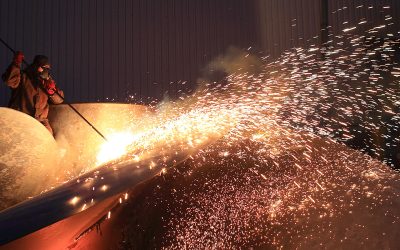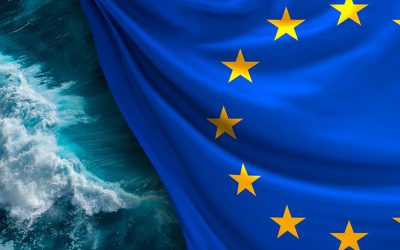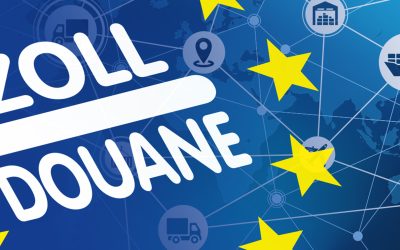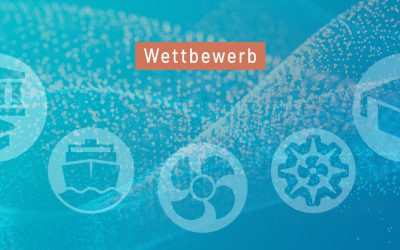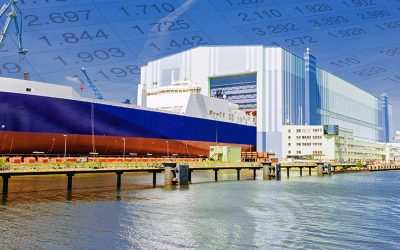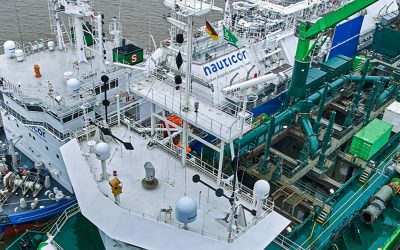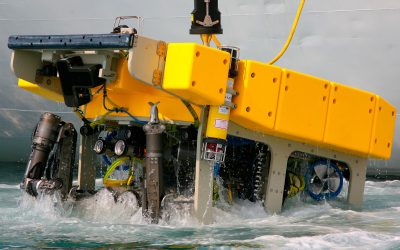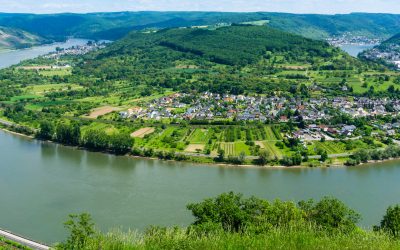In June 2020, the German Maritime Centre commissioned the company Ramboll to conduct a study on a proposal for harmonising the laws and procedures for refuelling ships with liquified gases and fuels with a low flashpoint.
Starting point
To be able to implement the emission standards for decarbonisation, it is necessary to reduce emissions of pollutants and greenhouse gases across the world. In shipping, plans are underway to replace fossil liquid or gaseous fuels with alternative fuels in the future. By using electricity-based production processes or by mixing in bio-fractions, it will be possible to substantially reduce the pollutant emissions caused by shipping.
For this transition to succeed, it is necessary to identify and remove the regulatory barriers related to bunkering regulations for alternative fuels. So far, the approval practices for bunkering alternative fuels have been very heterogeneous in Germany’s federal states. In almost every German seaport, individual permits for bunkering with LNG have to be applied for – often from different approval authorities.
Goal
Existing legal regulations that apply at federal, state and port level in Germany and in selected EU member states are examined. The aim is to identify, based on good-practice examples, key points for how harmonised bunkering regulations in the relevant German federal states can ensure the safety of bunkering operations and at the same time accelerate the establishment and expansion of environmentally friendly fuel technologies. This approach offers the possibility of influencing regulatory conditions at both federal state and port level in a forward-looking and fuel-independent manner.
Results
Guidelines were developed that should help simplify and harmonise the individual federal states’ different regulations and approval procedures at port locations. The guidelines were intended to create greater certainty of assessment for all parties involved in preparing and implementing approval processes for land- and seaward bunkering operations. They also explicitly address the alternative fuels that will play a decisive role in reaching global emission reduction targets but are still under development or testing.
The guidelines therefore not only contain suggestions for the safe and efficient bunkering of LNG, but also focus on other alternative fuels in German seaports.
In order to ensure that the guidelines were practically relevant, experts such as infrastructure and terminal operators, LNG bunker suppliers and clients, port emergency services, approval and port authorities, and government representatives and administrators were interviewed. The results of the discussions were incorporated into the study.
For these target groups, the study developed recommendations for action that enable stakeholders to analyse the legal starting points (regulatory texts), evaluate the approval practices for bunkering operations, prepare risk analyses and assess local conditions with greater certainty.
The recommendations are based on five guiding principles:
From the specific to the general/from the exception to the rule; use of good practice examples and empirical data; capacity to appraise distinctive local or port-specific features; risk-based (probabilistic) approach versus an exclusively consequence-based (deterministic) approach; maintaining the performance of the port (conditions for the implementation of simultaneous operations (SIMOPS).
The recommendations for action on bunkering alternative marine fuels are:
1. Dialogue across the federal states regarding harmonised regulations and guidelines
Germany’s federal structure gives rise to distinctive features compared to other countries. In the Netherlands, Belgium and Sweden, responsibility for the approval of bunkering operations is usually assigned to the ports, mostly without further restrictions, unlike in Germany (see table). The national-level legislation is usually based on the implementation of European directives. In addition to the port authorities, other approval authorities must also be involved in the approval process. These review the bunkering criteria within their competences (for example, environmental law or operational safety)
The specialist authorities that needed to be involved for a successful implementation and dialogue were identified in the study. These are:
a) The federal state governments and the relevant port/approval authorities,
b) The port/environmental authorities, trade supervisory authorities and other port emergency services.
On the initiative of the German Maritime Centre, a time and action plan will be developed with the responsible ministries in the federal states as the study progresses.
2. Federal state regulatory texts
The bunkering of alternative marine fuels should be allowed provided that a permit is issued by the competent (port) authority. For this purpose, it is recommended to implement a provision for alternative marine fuels independent of fuel type in federal state regulations. The term “compressed or liquefied gases and other low flashpoint fuels” covers the fuels ammonia, liquefied natural gas, liquefied petroleum gas, methanol and hydrogen, which have the greatest potential for future use.
(The table below presents the different regulations and names of substances for bunkering operations in German and European reference ports.)
3. Tasks at port level
In the Netherlands, Belgium and Sweden, the bunkering of alternative marine fuels, especially LNG, is dealt with much more extensively in the regulatory texts at port level than in German seaports.
With regard to alternative fuels, detailed requirements for a bunkering permit need to be defined in Germany. In the course of the necessary revision, there is an opportunity to standardise the structure in order to make it easier for stakeholders to identify the port-specific components in the regulations. In the guidelines, the existing contents of the regulatory texts are analysed at port level and described, e.g. for bunker checklists, control zones and weather limits for bunkering operations.
The recommendations presented in the guide for the approval of bunkering alternative marine fuels also aim to keep the administrative burden on the competent authorities low.
The introduction and establishment of a digital platform – at national level or by using the tool of the IAPH Clean Marine Fuels Working Group – can create good conditions for the establishment of an expert network and dialogue. When introducing new alternative fuels, the involved stakeholders can benefit from the experiences of other seaports.
It is proposed that experts provide information on the process steps for bunker approval, risk analysis, plant approval, safety zones, etc. on a common digital platform. This should also apply to bunker management plans, checklists, online forms and the mapping of berths. The information and documentation to be provided by bunker clients and suppliers can be made available to all ports on such a platform.
In addition to the established bunker suppliers, there will be other providers in the future. The number of bunker suppliers will increase and therefore it may be useful to establish an accreditation procedure.
It is recommended to inform bunkering parties at an early stage about their differing responsibilities in relation to authorities.
It is also recommended that the competent (port) authority, which is usually the first point of contact for the bunkering parties, acts as a single point of contact in the approval process. Such an approach ensures that coordination regarding the fire safety concept or operational safety is addressed to the correct parties.
4. Harmonisation of risk analyses (modular toolbox)
Currently, LNG bunkering operations cannot be approved without risk analyses. These are prepared by bunker suppliers for the bunkering vehicles or facilities and by port authorities or independent bodies (commissioned by them) for the ports. In order to harmonise the procedure and establish uniform safety levels, the study presents a modular toolbox for conducting risk analyses. Taking into account the respective material properties, this can be applied to alternative marine fuels. This gives rise to specific safety measures and requirements for bunkering (e.g. control zones).
5. Guidance for assessing local conditions
Individual site-specific considerations complement the proposed model for harmonised risk analysis. These include critical infrastructure in the port area and potential seaward hazards. A uniform structure for the risk assessment of the bunker concept and berth is proposed. This is intended to make it easier for German seaports to work with the modular toolbox, taking into account their respective characteristics. When assessing berth situations, the control zones and risk acceptance criteria were identified as the most important criteria.
Outlook
The study was presented to a large number of federal state and port representatives in February 2021, who received the results very positively. They all agree that harmonisation has to happen. They welcomed the fact that the proposed recommendations for action take into account the necessary leeway for site-specific requirements.
As a result of the presented initiatives in the German seaports, a “Centre of Expertise” for alternative fuel bunkering could be established.
The international perspective/initiatives
Ports are interconnected through global supply chains and at the same time they are embedded in local and regional communities. Ports need to respond to global, regional and local challenges such as climate change, mobility, digitalisation, migration and social inclusion. Technological innovation and the global introduction of alternative fuels and other energy sources for international shipping will be essential to achieve the targets set out in the original IMO strategy to reduce greenhouse gas emissions from ships. Developments in the international environment, such as the new Future Fuels Network, an initiative of the ports of Rotterdam and Singapore, show a willingness to cooperate.
The complete study (only in German) is available here.






